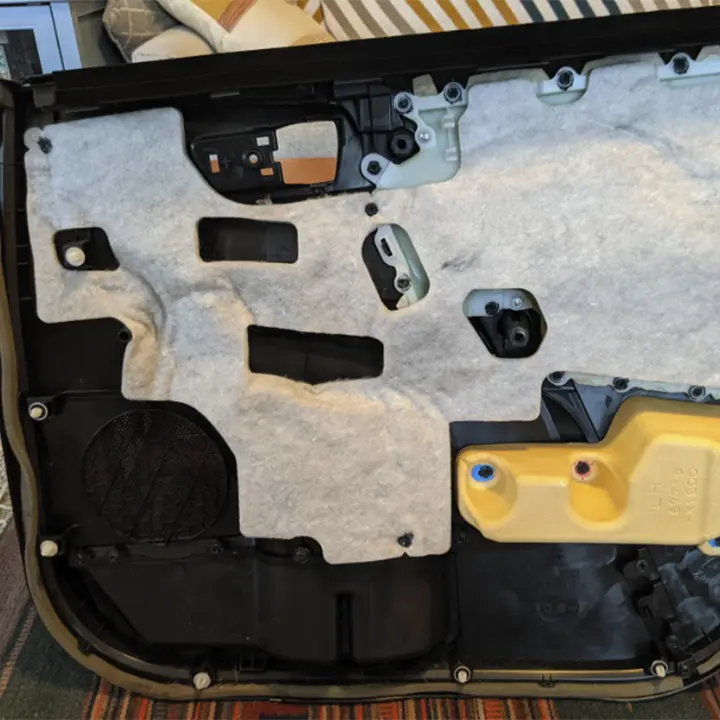Automotive Sound Deadening
Polyurethane foam is widely used in the automotive industry to improve cabin acoustic performance, reduce road noise, and enhance passenger comfort. It serves as a lightweight, cost-effective solution for sound deadening, vibration damping, and thermal insulation.
Description
Types of PU Foam Used for Automotive Sound Insulation
| Foam Type | Properties | Typical Use |
| Open-Cell PU Foam | Highly porous, absorbs airborne noise | Headliners, doors, panels |
| Closed-Cell PU Foam | Dense, blocks both air and vibration | Floor insulation, engine bay |
| Reticulated PU Foam | Engineered for breathability and targeted frequency control | HVAC and interior acoustics |
| Multi-Layer Composite Foam | PU foam with barrier films or aluminum foil | Engine covers, heat + sound blocks |
Common Sound Issues Addressed
| Noise Type | Solution |
| Engine and drivetrain hum | Closed-cell PU foam barriers under the hood |
| Tire and road noise | Underbody floor insulation with PU foam backing |
| Wind noise | Door seal fillers and A-pillar acoustic foam |
| Cabin echo & vibration | Open-cell foam in roofliner, seats, and dash |
Key Automotive Applications of PU Foam for Acoustics
Headliners & Roof Panels: PU foam reduces rain impact noise and airborne sound transmission from the roof.
Door Panels & Pillars: Applied as filler or backing to absorb road and wind noise, blocks sound transmission from exterior to cabin.
Flooring & Underbody: Used beneath carpets or floor mats to dampen engine, exhaust, and road vibrations.
Dashboards & Instrument Panels: Controls buzz, squeak, and rattle (BSR) noises using molded foam inserts.
Engine Compartment (Acoustic Barriers): PU foam combined with foil layers insulates cabin from engine noise and heat.
Wheel Arches & Trunk Liners: Blocks tire and road noise at the source.
Benefits of PU Foam in Automotive Acoustics
Effective Noise Absorption: Controls wide frequency ranges including mid and high frequencies.
Lightweight & Flexible: Ideal for modern vehicle design and fuel economy standards.
Thermal Insulation Properties: Offers temperature stability in engine and interior zones.
Custom Moldability: Can be shaped for trim parts, dashboards, and hidden cavities.
Cost-Effective: Affordable alternative to heavier or more complex soundproofing materials.
- ISO 3795 / FMVSS 302: Flammability standards for automotive interior foam.
- OEM specifications: Custom formulations for NVH (Noise, Vibration, Harshness) control.
- RoHS / REACH compliance: For environmental and chemical safety.






